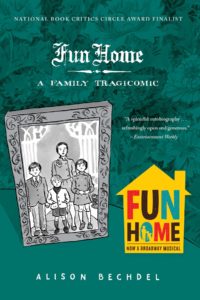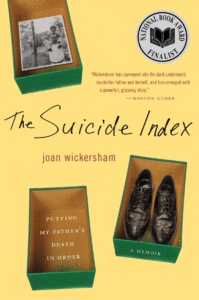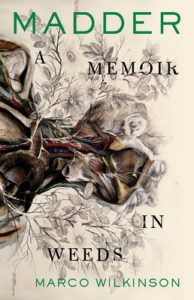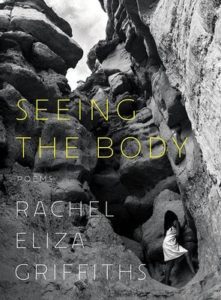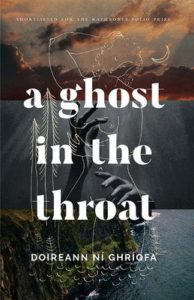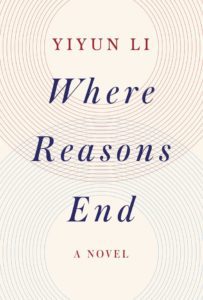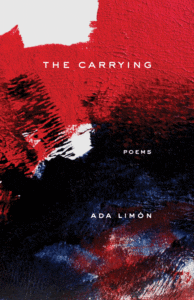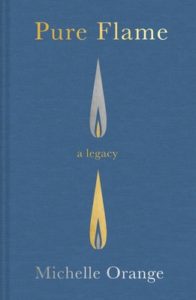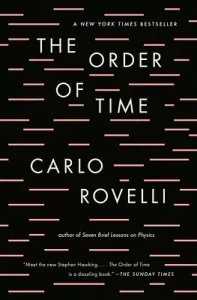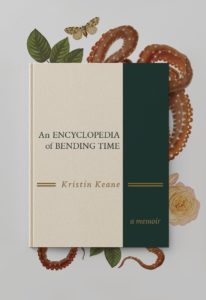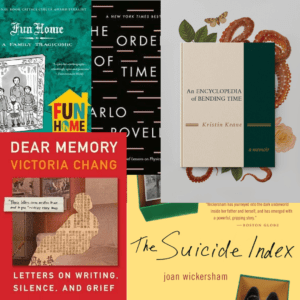
Recently, in Los Angeles, I stepped into a time capsule, returning to a city I haven’t lived in for nearly twenty years. Immediately, familiar artifacts came into view: the incomparable landscape of a sunset smear over the congested 405, the shock of blush of Pink’s Hot Dogs stand on La Brea, the way heat crackles off the concrete, palm tree fronds fanned out like peacock feathers. I felt twenty again. At the Getty Museum, I visited an old friend: The Portal of Rouen Cathedral in Morning Light (1894), one from Claude Monet’s series of canvases portraying a somewhat identical vantage point of the church. The colors in these images are meant to capture different periods of time from a similar place in space. To me, the interesting thing about these works is how he played with time, since the brush and paintwork took much longer to create than the actual observations themselves, years later back in Giverny. When I visited the painting when I lived in L.A., I thought it was an observation about how time works. Revisiting the image all these years later though, I think I see now he was saying something about how time can be twisted.
For my book An Encyclopedia of Bending Time, I spent a lot of time thinking about what time does and undoes. The works I offer below interrogate time in text through myriad forms, playing with and revealing its machinations all through inventive means. Like the waves and fragments of memory, many of them swerve outside the lines of stiff categorization. Several break strictly from text all together by introducing multimedia elements like illustrations, photography, and collage. Like time, they bend it, exploring variations on themes such as family life, memory, history, the body, and birth. Because they interrogate time, unsurprisingly, many preoccupy themselves with death and grief. Paracelsus, a physician and alchemist asked, “Time is a brisk wind, for each hour it brings something new . . . but who can understand and measure its sharp breath, its mystery and its design?” These writers, to whom I am very grateful, I think do.
***
Fun Home: A Family Tragicomic by Alison Bechdel
Alison Bechdel’s graphic memoir Fun Home is a time machine. Through detailed panels, exuberant, literary prose, and the evocation of (among others) Icarus and Daedalus, Odysseus, Proust, and Colette, the narrator invites the reader into her childhood mythos and home. Bechdel moves at first chronologically through early childhood before swiftly foreshadowing a fallout to come: her father’s secret identity, a swirl the circular narrative spins around. Untangling a tender and fraught family history, Fun Home explores gender, sexuality, trauma, and what it means to make a life of art. “It’s tempting to suggest, in retrospect,” she writes, “that our family was a sham. That our house was not a real home at all but the simulacrum of one, a museum. Yet we really were a family, and we really did live in those period rooms.” Bechdel steadily walks the reader through those room and time as she pivots between youth, development as an artist, and exploration of her queer identity. By the time the narrator is forced to confront her parent’s unraveling relationship and her father’s closeted second-life, I felt like I was living in the home with her–its furniture, even smells, peculiarly realized. When her father dies, their narratives entwine into a time-compression: the present-day narrator is put back into her father’s swirling eddy, yet something has shifted her ability to see that period of time, anew. “And in a way, you could say that my father’s end was my beginning. Or more precisely, that the end of his life coincided with the beginning of my truth.” I loved the narrator’s self-reflexivity, the crackling sentences amongst a sea of sparkling images in this deeply complex, multimodal masterpiece about what time does–and undoes to fermenting secrets. This book launched me into a deep love of the literary graphic, and I have never looked back.
Suicide Index by Joan Wickersham
Joan Wickersham’s The Suicide Index left me stunned. Like a lot of my favorite work, Wickersham’s memoir is hard to describe: part paratext, part narrative, the reader steps in as sidekick while the narrator attempts to assemble the events leading up to her father’s suicide. Early on, she writes, “This is what I do know, or what I believe. When someone dies in this way, you’re left with unanswerable questions, unresolvable paradoxes. You have to become a posthumous mind reader. You have to look at the things you know, those small, possibly unreliable and often contradictory scraps of memory, and come up with your own version of the truth.” It is at the arrival to “Suicide: deviation from chronological narrative of,” that the time-warping really begins as intersections of present, past, and an even imagined landscapes converge. The narrator, consigning to reconstruct time, notes that the only question she recognized the day of her father’s death, and in its short aftermath, was “why.” The other questions, the messy stuff she’s stewed in for over fifteen years, arrived later. Suddenly, the purpose shifts. “If you take it year by year–chronologically–not much happens,” she writes. “It’s when you begin to look at it thing by thing that the story starts to emerge.” She describes a labyrinth, a maze of a narrative where, “there are so many different beginnings, and an infinite number of possible places to end.” My greatest pleasure in this text is how the indexed-form itself evokes a sort of time-portal the reader can step through at any point, spellbinding the reader before being shook back to the task at hand of making sense of tragedy. The Suicide Index masterfully puts truth and the pursuit of truth into a ring together, one which can be entered at any juncture along the perimeter. I was wrecked, moved, changed by this story and its brilliant form.
Dear Memory: Letters on Writing, Silence and Grief by Victoria Chang
Written as an epistolary, Victoria Chang’s letters are invitations into intimate addresses exploring longing, immigration, grief, silence, trauma, secrets. At the center of Chang’s work–a stunning visual text composed of photographs, family artifacts, and other ephemera placed and sometimes collaged beside letters to addressees like friends, family, even her body–is memory’s dilemma. “Memory is everything, yet it is nothing,” Chang writes. “Memory is mine, but it also clings to the memory of others.” What struck me about this very special book, is the way Chang steps through time’s door to explore how narrative reliability waxes and wanes in its shadow, asking questions through text and image, allowing her to “speak to the dead, and the not-yet-dead.” Brilliantly structured, the multimedia composition fragments memory itself: lush two-page spreads juxtapose a moment in time (such as a photograph of a family member, or a marriage certificate) with a present-day letter, the seam of the page becoming a window where the two paths of time converge. In one stunning layout, a vertical composition of two images appear: a photograph of her grandmother’s sister, below it in the same image, the figure cut out and replaced with text. Stuck to its page are small notes: “Everything but the flowers/and books are cut off./History has been narrowed/down so much that/I can’t get in.” Meaning: the seam also becomes a mirror time complicates, history a thing one can move toward, not just away from.
Madder by Marco Wilkinson
In Marco Wilkinson’s Madder, time is dug up, dried out, cooked, and preserved. This hybrid, lyrical memoir builds a matrix from horticulture, generational truths, un-truths, and memory. Wilkinson blends his own recollections with those of his mother’s as he travels along the branches of his family tree, vacillating between his mother’s Uruguayan roots, and questions relating to his own–primarily, the identity of his father. “My memory plays tricks on me,” he writes, “and my vision has a habit of doubling, tripling, swimming with ghosts and shadows. Maybe I am the product of another lifetime.” I was struck by Wilkinson’s preoccupation with the period before his birth and the careful weaving of themes throughout the text. Gardening is the stuff of time: birth and death, past, present and future, their orchestration, aways the task of their careful tenderer. I loved how Wilkinson’s perfectly measured sentences and eloquent, astonishing imagery resulted in him embodying the metaphor he opens the book with. He writes, “A weed is out of place. It cannot say how it got here, to this lonely spot. To say it has pilgrimed here would suppose intention and a singular trip carried out in one body to one place. Rather this travel has been going on endlessly across generations: a nomadic life. One day, out of place: here.” Wilkinson wants impossibly to remember things he cannot, to grow something from nothing, a problem laid bare at the center of this heartbreaking work. “Remember,” he says at the conclusion, “that there is no such thing as absence, only ache.”
Seeing the Body by Rachel Eliza Griffiths
I encountered Rachel Eliza Griffiths’ hybrid work at a special online event through The Center for Fiction. When she read a poem about her mother, something inside me shifted: it had been nearly a year since my own had passed, and Griffiths’ remarkable, threnodic work was a tender balm in a heartsick time. In the eponymous poem “Seeing the Body,” she writes “I remember/her voice like a horn I never want/to pull out of my heart. In the next life,/which is here & here, I gather every mouth/that ever sang my mother’s blues.” A meditation on birth and death, Griffiths’ collection combines poems with self-portraiture, resulting in a multimodal experience of embodied grief across time. In “Belief” she writes, “I’d come into the room & try to write/a different ending on those anonymous walls./There was less time all the time/until time changed./You know what I mean./You state at the clock, the vomit-hued walls, that/hush dripping in your head until you feel/you have never been elsewhere.” The text and photographic interlude relate to her mother’s death and her experience mourning, but also to history, Black womanhood and identity, racism and violence in America. Many have identified this work as an elegy—for me, it is also a brilliant expression of how metaphor can become form. In Seeing the Body, the aggregation of text and images become a cohered vessel, a kind of body itself, conveying the lines of time, and how they can change in suddenly in very considerable ways.
A Ghost in the Throat by Doreann Ní Ghríofa
I was spellbound listening to Ní Ghríofa discuss her prose debut on David Naimon’s podcast, “Between Two Covers.” In what has been categorized as hybrid essay, narrative, biography, autofiction, meditation, memoir, the Irish poet Ní Ghríofa’s indeterminable work, A Ghost in the Throat, is a protean text freezing two periods of time which Ní Ghríofa swims fluidly in between. At the heart of one is Eibhlín Dubh Ní Chonaill, an eighteenth century Irish noble woman and author of “Caoineadh Airt Uí Laoghaire,” an elegy recounting her husband’s murder and its aftermath. The problem with Ní Chonaill’s oral keen is that while it has survived a great length of time, she has been nearly erased from history, a puzzle which deeply haunts Ní Ghríofa. This story transcends time by intersecting with Ní Ghríofa’s present where she juggles its reemergence in her life against her identity as a writer, translator, mother and wife. In one portal of the text, she calls the reader in to travel back to the moment Eibhín Dubh finds her dead husband, “We bend over Art’s body. We give of ourselves to shelter him. We stand with her to grieve him. This stranger holds all of us. I will not allow Eibhlín Dubh to suffer this alone, nor will you. Let us step in and stand with her. She is also you, and she is me.” Ní Ghríofa opens with the line, “This is a female text,” a critical hinge she conjures throughout the work, as she artfully collapses 1773 and present day into a time-traveling, detective-like quest about centering and make-sense of another woman’s life. A Ghost in the Throat is about haunting and being haunted, and about the windfall of somehow finding yourself in the process.
Where Reasons End by Yiyun Li
Yiyun Li’s novel defies and bows time. In an invented conversation between a mother and her deceased child, the narrator asks the central question, “Who can say the vagrant doesn’t have a reason to change the course of its flight?” Nikolai, the son, the reader learns immediately, has taken his own life, yet the narrator never inquires why. As the book’s title responds to this omission, it and the story also catapult the reader into a timeless space, “a place called nowhere” where mother and son philosophize, argue, treat language with interrogation, care and carefulness, in a plain extending far past comprehension. “How I hate this self, he said. But you have a self that is…what is the adjective I should use? I said. Anything I could say would be a cliché. Now is the time we have to be exact with verb tenses. Do I have a self? Did I? Will I? A self is timeless, I said. Tenseless.” In the same way the book explores the challenges and limits of language, the degree of brilliance of this work also seems to extend beyond categorization. Time is paused, but it also remarkably goes on in a new dimension. If time can collapse anywhere, it is in our imaginations, and this book explores that possibility with singular incandescence. “Where else can we meet but in stories now?” the narrator asks. It is in stories, I believe so deeply, that time can be anything we want it to be.
The Carrying by Ada Limón
Time hangs often in the deeply meditative poems of this collection. In The Carrying, through elegiac laces of language, Ada Limón observes nature, people, single moments, with tenderness and a very careful eye. Turning the pages of the collection for the first time like turning a kaleidoscope, where each piece held in its object chamber is formed from memory and time. “Overpass” takes the reader into a young girl’s perspective as she presses herself over a guardrail, observing the slow decomposition of a racoon’s body. In “On a Pink Moon,” the narrator invokes present, past and future at once. “I plant three seeds/As a spell. One/For what will grow/Like air around us,/One for what will/Nourish and feed,/One for what will/Cling and remind me—/We are the weeds.” In “Carrying,” the narrator is the observer and the thing observed at once: “The sky’s white with November’s teeth,/and the air is ash and woodsmoke./A flush of color from the dying tree,/a cargo train speeding through, and there,/that’s me, standing in the wintering/grass watching the dog suffer the cold/leaves. I’m not large from this distance,/just a fence post, a hedge of holly./Wider still, beyond the rumble of overpass,/mares look for what’s left of green/in the pasture, a few weanlings kick/out, and theirs is the same sky, white/like a calm flag of surrender pulled taut./A few farms over, there’s our mare,/her belly barrel-round with foal, or idea/of foal.” I love returning to these poems, the way Limón steps through time with such descriptive power and precision, stretching each one into careful, glistening ruminations. The Carrying is a model for me of how to slow time on the page and decorate it in lavish prose.
Pure Flame: A Legacy by Michelle Orange
I read Pure Flame: A Legacy in one burst. Part memoir, criticism, and feminist history, Michelle Orange’s book examines the path leading to and through her mother’s lung cancer diagnosis, as she reaches through time to untangle and complicate the generational experiences of the women in her life. In dazzling chapters that summon myriad perspectives from and about (among others) Susan Sontag and Adrienne Rich, art, literature and research–including her mother’s own role as a central figure in a famous Harvard Business Review case study–Orange shuttles the reader through eras and evolutions of a complicated mother-daughter relationship. Time in this work comes by way of the subtitle, and the subsequent inspection of inheritance. Orange writes of her mother in the wake of her grandmother’s death, “What did we share now? What in this world belonged only to us? Rita’s death had drawn the matter of inheritance close, invoking the forces that had helped shape our maternal line, leaving gouges and fissures where a strong heritage might be. It was a predicament that marked us simply as women, existing without and outside of history, severed from our own past.” This portrait made me think harder as a writer about vacillation and story construction, and as a woman, about the pitfalls and complications of historical memory.
The Order of Time Carlo Rovelli
Italian physicist Carlo Rovelli’s book deconstructs hyper-complex, scientific precepts in the most unexpected of ways: with clarity, and poetic-like syntax. Across three parts, through anecdotes, the decomposition of concepts, and visual diagrams, Rovelli churns out palatable explanations and historical backdrops to some of the most complicated and head-scratching notions of time and space. Notably, Rovelli manages to do this with lucid elegance, a balance in which black holes, gravitational fields, special relativity and loop theory are somehow inexplicably conveyed with charm. Rovelli makes clear his stance early on, “The ability to understand something before it’s observed is at the heart of scientific thinking.” As I’m equally preoccupied by the potentials of all that unknowing, this disclosure hooked me immediately. The Order of Time accounts for it, and that which we do know, serving as a guidebook for anyone interested in its convolutions. Yet, it also goes a step beyond into what it does to us emotionally, a delight I didn’t quiet expect. This passage, for example was buried like a jewel: “Because everything that begins must end. What causes us to suffer is not in the past or the future: it is here, now, in our memory, in our expectations. We long for timelessness, we endure the passing of time: we suffer time. Time is suffering.”
Kristin is, as you may have gathered, slightly obsessed with time, and we highly recommend taking a look at her debut memoir, gorgeous book is of course, inspired by all these texts, and we recommend taking a peek at her AN ENCYCLOPEDIA OF BENDING TIME if you enjoyed this list. — Eds.
This formally inventive memoir, written in the style of an encyclopedia, is the author’s attempt to both remember her mother and map her own grief. Keane puts thinkers like Einstein and Barthes in conversation with pop culture touchstones like Interstellar and Alice’s Adventures in Wonderland to explore what it means to lose someone, and what remains of a person—and your relationship with them—after they’re gone.

